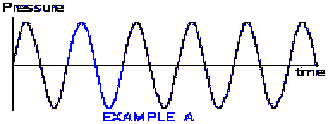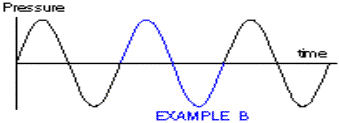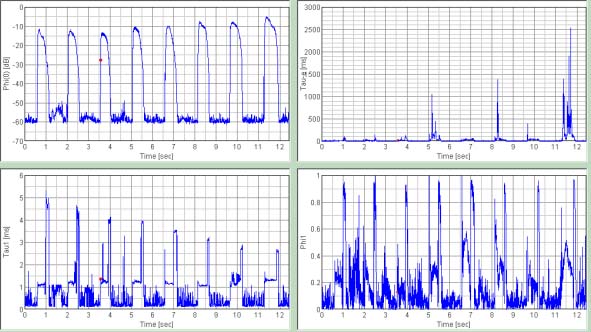Contact me
Sign my Guest book
View my Guest book
Old Guest book
Musical Principles
Sa :
Voice Culture
Music Education
Sound Characteristics
�Importance of Yoga in Music Education�
Report of paper presentation
Re :
Music Therapy
Noise Pollution
Ga :
Musical Instruments of India
Music Dictionary
Western-Indian Dictionary
Reference Books
Ma :
My Introduction
Programmes / Workshops
Regular Activities (pics)
Pa :
Raaga Songs from Films
Raagas
Raaga Concept and Rules
Dha :
World Music
World Music Day
International Council Letter
Worldwide Links
Fusion Music
Ni :
Music and Yoga : English
Music and Yoga : Marathi
Yoga for Musicians
Yoga Workshop

Basic Sound Characteristics
The Pitch
The pitch of a musical note is a subjective characteristic and a relative term. We measure this pitch, or the shrillness of the note by frequency � an objective term. The unit of frequency is hertz. When we say that the frequency of a particular note is 240 Hz (Hertz) we mean that the body, which produces the sound has vibrated 240 times in one second.
In aroha or the ascending order of notes, the pitch increases i.e. the frequency (f) increases.
 |
|
Higher Frequency = More cycles/Second |
 |
Lower Frequency = Fewer cycles/Second |
Factors influencing frequency are :
1) 'f' is affected by tension : f is directly proportional to tension i.e. more the tension f increases, so does the pitch and vice versa.
2) 'f' is affected by length : Length is inversely proportional to f. Females have voice of higher pitch than males as their vocal cords are shorter.
3) 'f' is also affected by thickness or garage : Thicker the vibrating body lower is the note. e.g. in a tanpura we increase the tension to get a higher note. Also, the thickness of the string to produce the �kharja� shadja (lower C) i.e. a lower note is greater that the thickness of the string producing the �madhya� shadja (middle C). In a sitar to produce higher notes we decrease the thickness of the vibrating string by fingering it i.e. stretching it.
4) Other factors influencing the frequency are mass, density etc. of the vibrating object.
Intensity
The Intensity or loudness of a musical note is also a subjective characteristic and a relative term. It is measured by the objective term called amplitude. Intensity or loudness depends upon the amplitude and is directly proportional to the square of the amplitude i.e. when the amplitude doubles, the intensity increases 4 times. For a human ear to perceive the different in intensity, it should change at least 1 & � times more or less.
When a greater force is employed to produce a note the amplitude increases its frequency remaining constant.
The force with which sound is initialized, decides the amplitude or intensity.

The Greater the Vibration of the Source,
The Greater the Energy carried by the Wave,
The Greater the Amplitude of the Wave,
The Higher is the apparent Volume

The Smaller the Vibration of the Source,
The Lower the Energy carried by the Wave,
The Smaller the Amplitude of the Wave,
The Lower is the apparent Volume
Timbre
Quality of a musical note (or any other) is that particular character of sound which enables us to distinguish between two sound notes of same frequency and intensity but produced by two different sounding bodies. This characteristic is called as timbre or the texture of the note.
When any sound it produced the fundamental frequency along with it produces its overtones. The overtones, which are integral multiples of the fundamental frequency, are called as harmonics. The presence of these harmonics and overtones influences the timbre. e.g. if a note of frequency 100 is produced, it produces along with it 150f, 200f, 300f, 500f, 750f, 800f etc. Then 100 is the fundamental note and the first harmonic, 200 the 2nd harmonic, 300 the 3rd harmonic, the 4th harmonic is absent and so on 150f and 750f are just overtones. Broadly, more the number of harmonics better is the timbre or the tonal quality.
The harmonics and overtones are usually feeble to hear. The intensity of the fundamental note is always more than the overtones. The relative intensity of the overtones influences the timbre.
Sometimes the harmonics can be heard clearly e.g. in a well-tuned tanpura �ni� can be heard clearly, from the Kharja String. See below voice graphs with different textures and harmonics present.

References and more information :
Sound - Table of Contents
Learn Audio Online
Hyperphysics
